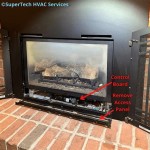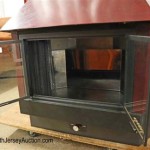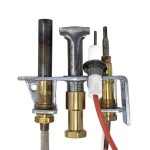Painting a Marble Fireplace Surround: A Comprehensive Guide
A marble fireplace surround is a focal point in many homes, exuding elegance and sophistication. However, over time, the existing finish might become outdated, chipped, or simply not align with a homeowner's changing aesthetic preferences. While the idea of painting marble might seem daunting, it is a viable option for updating its appearance. Executing this project correctly requires careful preparation, the use of appropriate materials, and adherence to proper painting techniques. This article provides a detailed guide to painting a marble fireplace surround, ensuring a professional and long-lasting result.
Before embarking on the painting process, it is critical to assess the condition of the marble. Examine the surface for cracks, chips, stains, or previous repairs. Addressing these issues beforehand is essential for achieving a smooth and even finish. Also, it is imperative to consider whether painting is the most suitable option. Marble is a porous stone, and painting it can be a permanent decision. Weigh the pros and cons carefully, considering factors such as the marble's value, the desired aesthetic, and the potential impact on the fireplace's overall appearance.
Key Point 1: Surface Preparation – The Foundation for a Flawless Finish
Proper surface preparation is arguably the most crucial step in painting marble. Inadequate preparation can lead to paint adhesion issues, uneven coverage, and a compromised final appearance. The following steps outline the essential procedures for preparing a marble fireplace surround for painting:
Cleaning: The initial step involves thoroughly cleaning the marble surface. Use a mild detergent specifically designed for stone or marble. Avoid harsh chemicals or abrasive cleaners, as these can damage the marble. Dilute the detergent according to the manufacturer's instructions and apply it to the surface using a soft cloth or sponge. Gently scrub the marble to remove dirt, grime, and any surface residue. Rinse thoroughly with clean water and allow the surface to dry completely.
Repairing Imperfections: Inspect the marble for any cracks, chips, or damage. Small cracks can be filled with a marble repair filler specifically designed for this purpose. These fillers are typically two-part epoxy compounds that harden to a durable, stone-like finish. Apply the filler according to the manufacturer's instructions, ensuring it fills the crack completely. Allow the filler to cure fully, and then sand it smooth using fine-grit sandpaper (220-grit or higher). For larger chips, consult a professional stone repair specialist.
Sanding (Lightly): While marble is a relatively soft stone, excessive sanding can damage its polished surface. However, a light sanding is necessary to create a slightly roughened surface that will improve paint adhesion. Use a very fine-grit sandpaper (320-grit or higher) and lightly sand the entire marble surface. The goal is not to remove the existing finish but to create a "tooth" for the primer to grip onto. After sanding, remove all sanding dust with a tack cloth or a damp cloth.
Priming: Priming is essential for ensuring proper paint adhesion and preventing stains from bleeding through the topcoat. Use a high-quality primer specifically designed for use on non-porous surfaces, such as tile or stone. Epoxy primers are often recommended for marble, as they provide excellent adhesion and durability. Apply the primer according to the manufacturer's instructions, using a brush or roller designed for smooth surfaces. Ensure even coverage and allow the primer to dry completely before proceeding to the next step. Some primers may require multiple coats for optimal performance.
Masking: Protect surrounding areas, such as walls, flooring, and the fireplace opening, with painter's tape and drop cloths. This will prevent accidental paint splatters and ensure clean lines. Pay close attention to details when masking to achieve a professional-looking finish.
Key Point 2: Selecting the Right Paint and Application Techniques
The choice of paint is crucial for achieving a durable and aesthetically pleasing finish on marble. Not all paints are suitable for non-porous surfaces, and selecting the wrong type can lead to peeling, cracking, or poor adhesion. Proper application techniques are equally important for ensuring even coverage and a smooth, professional-looking result.
Paint Selection: For painting marble, acrylic latex paints are a common choice due to their durability, ease of application, and availability in a wide range of colors and finishes. However, ensure the paint is specifically formulated for use on non-porous surfaces or tile. Alternatively, epoxy paints offer exceptional adhesion and durability, making them a suitable option for high-traffic areas or fireplaces that are frequently used. Consider the desired finish (e.g., matte, satin, semi-gloss) when selecting the paint. Higher gloss finishes are easier to clean but may highlight imperfections in the surface.
Application Tools: The right tools are essential for achieving a smooth and even paint finish. Use high-quality brushes and rollers specifically designed for use with the chosen paint type. For acrylic latex paints, synthetic brushes and rollers are generally recommended. For epoxy paints, consider using brushes and rollers designed for epoxy application, as these are more resistant to the chemicals in the paint. Avoid using cheap brushes or rollers, as they can leave brushstrokes or roller marks in the paint.
Application Techniques: Apply the paint in thin, even coats. Avoid applying thick coats, as this can lead to drips, runs, and uneven drying. Use smooth, overlapping strokes to ensure complete coverage. Allow each coat to dry completely before applying the next coat. Refer to the paint manufacturer's instructions for recommended drying times. Typically, two or three coats of paint are required to achieve full coverage and a uniform color.
Sanding Between Coats (Optional): For an exceptionally smooth finish, consider lightly sanding the paint between coats. Use very fine-grit sandpaper (400-grit or higher) and gently sand the surface to remove any imperfections or brushstrokes. After sanding, remove all sanding dust with a tack cloth or a damp cloth before applying the next coat of paint.
Key Point 3: Post-Painting Care and Maintenance
Once the painting is complete, proper care and maintenance are essential for preserving the finish and ensuring its longevity. Avoid harsh chemicals or abrasive cleaners, as these can damage the paint. Regularly clean the painted surface with a mild detergent and a soft cloth. Pay attention to any areas that are prone to staining, such as around the fireplace opening.
Drying and Curing Time: Allow the paint to dry and cure completely before using the fireplace. Refer to the paint manufacturer's instructions for recommended drying and curing times. Typically, it takes several days for the paint to fully cure and reach its maximum hardness and durability. Avoid placing any objects on the painted surface during the curing process.
Cleaning and Maintenance: Clean the painted marble fireplace surround regularly with a mild detergent and a soft cloth. Avoid using harsh chemicals, abrasive cleaners, or scouring pads, as these can scratch or damage the paint. Gently wipe the surface to remove dirt, dust, and soot. For stubborn stains, consider using a stain remover specifically designed for painted surfaces.
Heat Considerations: If the fireplace is frequently used, the heat can potentially affect the painted finish over time. Monitor the painted surface for any signs of cracking, peeling, or discoloration. Consider using a heat-resistant paint specifically designed for fireplaces if the fireplace is used extensively. Regularly inspect the painted surface for any signs of damage and address them promptly to prevent further deterioration.
Touch-Ups: Over time, the painted surface may experience minor chips or scratches. These can be easily touched up with the original paint. Lightly sand the damaged area, clean it with a damp cloth, and apply a small amount of paint with a fine-tipped brush. Allow the paint to dry completely. Consider keeping a small amount of the original paint on hand for touch-ups.
By following these guidelines, homeowners can successfully paint their marble fireplace surrounds, updating their appearance and enhancing the overall aesthetic of their homes. Remember that proper preparation, careful material selection, and diligent maintenance are key to achieving a long-lasting and beautiful finish.

Diy Marble Fireplace And Mantel Makeover Top Shelf

Painted Marble Fireplace Surround Two Years Later Simply2moms

Faux Marble Fireplace Savvy Apron

Diy Update Marble Fireplace Rustoleum High Heat Spray Paint Less Than 50 Naturalee Driven

Easy Diy Marble Hearth And A Fireplace Makeover The Painted Hive

How To Paint A Marble Fireplace Surround With Chalk

Faux Marble Hand Painted Fireplaces Traditional Painter

Never Liked My Marble Fireplace Was Excited To Find Annie Sloan Chalk Paint In Coco No Prep Needed Very Easy Fireplaces Surrounds

Simple Marble Fireplace Surround Upgrade

How To Paint A Marble Fireplace Hearth In Four Easy Steps Average But Inspired
Related Posts








